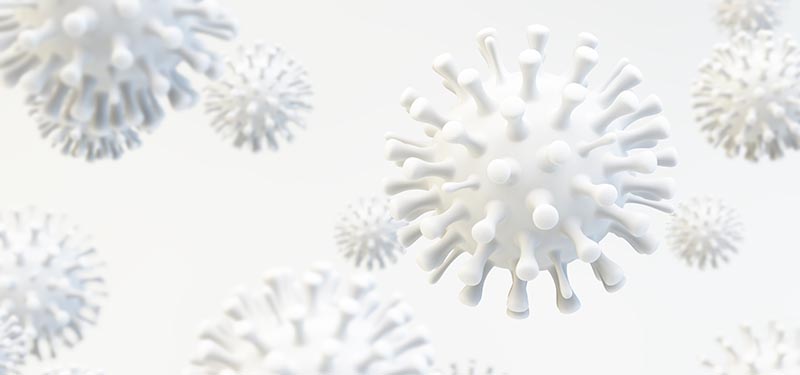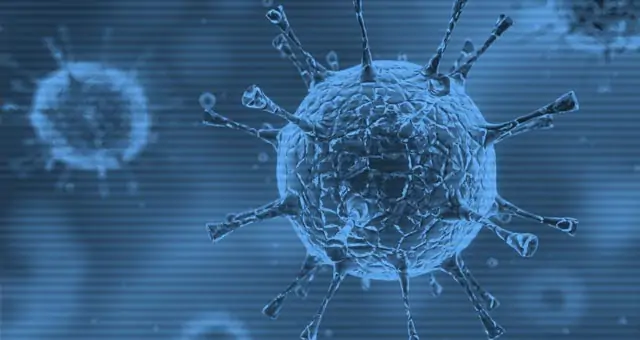The Omicron Variant: What to Know Right Now
November 29, 2021

On Monday, the World Health Organization (WHO) assessed the overall global risk of Omicron, the newly discovered SARS-CoV-2 variant, as “very high.” Financial markets have already been roiled by news of Omicron and countries are rushing to enact increased travel restrictions due to the variant. New York City issued an advisory on Monday strongly recommending everyone wear masks indoors at all times regardless of vaccination status. Outside of Delta, other variants of interest have come and gone with very little impact so what makes Omicron different? Here’s what you need to know.
What is the Omicron variant?
Like the Delta variant, Omicron is a variant of the original SARS-CoV-2 virus that causes COVID-19. Viruses spread by making copies of themselves. Variants arise when, in short, there is an error in a copy. Think of making thousands of copies of a document on a copy machine—eventually there will be a smudge here, a random line there. Some copies will not be identical to the original and, then, copies are made of those with variations. The Omicron variant was originally discovered in South Africa thanks to their sophisticated detection systems. It’s currently unknown where Omicron originated, epidemiologists in South Africa were simply the first to identify it and sound the alarm for the rest of the world. Within a matter of days, Omicron has been detected in multiple countries across the globe. As noted in an Infection Control Today article from September 2021, current variants have a “propensity for aerosolization” which helps them transmit quickly.
What makes Omicron different from other variants?
As Delta remains, at least for now, the globally dominant SARS-CoV-2 variant, scientists are asking whether Omicron can “outrun Delta.” Other variants that at first appeared troubling like Lambda and Mu, failed to gain global traction, leaving Delta to dominate. The notable difference in Omicron from other variants centers on its numerous mutations—reportedly around 30—along the spike protein. As described by MedCity News:
“The location of those mutations is significant because the virus uses the spike protein to latch onto a cell and infect it. This protein is also important because it is the target of the Covid vaccines that elicit an immune response. Scientists are concerned because spike protein mutations could make this new variant more transmissible and virulent. It’s also possible that the new variant may reduce effectiveness of the available diagnostics, drugs, and vaccines.”
All of that being said, as of today, no one knows what the impact of Omicron will be and we likely won’t know for another two to three weeks. What we do know, after close to two years of dealing with a global pandemic, is that there are ways to mitigate the spread regardless of the variant and waiting to see what happens is not the answer.
Using UV light to combat the spread of infectious disease
Ultraviolet germicidal irradiation (UVGI or UV) is a crucial—and proven—weapon in the battle against the spread of COVID-19 and other airborne infectious diseases. Professional, commercial grade UV like that manufactured by Aerapy destroys infectious pathogens and reduces viral load. In a recent Twitter thread, Dr. Richard Corsi, Dean of Engineering at the University of California, Davis, and Chair Emeritus, Dept of Civil, Architectural & Environmental Engineering, at the University of Texas at Austin broke down in real terms what needs to be done:
“1 – With COVID-19 on the rise (again). Remember, the SARS-CoV-2 virus is transported by respiratory aerosols. INHALATION of aerosols is the dominant transmission pathway. Many of us have not wavered on this fact since early in the pandemic. It’s about inhalation dose, folks.
“2 – Since the dominant pathway is INHALATION of virus-laden respiratory aerosols, then reducing inhalation dose of these particles or inactivating viruses in the particles is the answer to reducing infection (pre- or unvaccinated & even vaccinated breakthroughs).
“3 – Science & engineering gave us all of the tools we need to drive this pandemic into the ground. Vaccinations are a gift handed to us on a silver platter. The rest is not rocket science. The rest should be common sense.
“4 – For 1,000th time since early spring 2020… To significantly reduce inhalation dose of virus-laden particles or SARS-CoV-2 in those particles: Universal good mask wearing & increased ventilation + improved filtration (HVAC and/or portable HEPA) &/or upper-room UV disinfection.
“5 – These are the tools, folks. Vaccinate. Mask up. Ventilate. Filter. Disinfect (the air!). Proven technologies/approaches that reduce inhalation dose. Don’t flirt w/ the unproven.”
UV is a proven technology for disinfecting the air and mitigating the spread of infectious disease, including SARS-CoV-2. Moreover, Aerapy UV technology has been independently tested against SARS-CoV-2 and shown to reduce the virus by 99.97% in one air pass.
For more information on Aerapy’s proven upper-room UV disinfection products, contact us for free UV consultation at 866-994-2473 or use our contact form.
HOW PROTECTED ARE YOU?
Aerapy's commercial-grade UV lights protect your clients, staff, and your business with proven UV disinfection technology. Contact us for more information.
Please send me more information.

The Omicron Variant: What to Know Right Now
November 29, 2021

On Monday, the World Health Organization (WHO) assessed the overall global risk of Omicron, the newly discovered SARS-CoV-2 variant, as “very high.” Financial markets have already been roiled by news of Omicron and countries are rushing to enact increased travel restrictions due to the variant. New York City issued an advisory on Monday strongly recommending everyone wear masks indoors at all times regardless of vaccination status. Outside of Delta, other variants of interest have come and gone with very little impact so what makes Omicron different? Here’s what you need to know.
What is the Omicron variant?
Like the Delta variant, Omicron is a variant of the original SARS-CoV-2 virus that causes COVID-19. Viruses spread by making copies of themselves. Variants arise when, in short, there is an error in a copy. Think of making thousands of copies of a document on a copy machine—eventually there will be a smudge here, a random line there. Some copies will not be identical to the original and, then, copies are made of those with variations. The Omicron variant was originally discovered in South Africa thanks to their sophisticated detection systems. It’s currently unknown where Omicron originated, epidemiologists in South Africa were simply the first to identify it and sound the alarm for the rest of the world. Within a matter of days, Omicron has been detected in multiple countries across the globe. As noted in an Infection Control Today article from September 2021, current variants have a “propensity for aerosolization” which helps them transmit quickly.
What makes Omicron different from other variants?
As Delta remains, at least for now, the globally dominant SARS-CoV-2 variant, scientists are asking whether Omicron can “outrun Delta.” Other variants that at first appeared troubling like Lambda and Mu, failed to gain global traction, leaving Delta to dominate. The notable difference in Omicron from other variants centers on its numerous mutations—reportedly around 30—along the spike protein. As described by MedCity News:
“The location of those mutations is significant because the virus uses the spike protein to latch onto a cell and infect it. This protein is also important because it is the target of the Covid vaccines that elicit an immune response. Scientists are concerned because spike protein mutations could make this new variant more transmissible and virulent. It’s also possible that the new variant may reduce effectiveness of the available diagnostics, drugs, and vaccines.”
All of that being said, as of today, no one knows what the impact of Omicron will be and we likely won’t know for another two to three weeks. What we do know, after close to two years of dealing with a global pandemic, is that there are ways to mitigate the spread regardless of the variant and waiting to see what happens is not the answer.
Using UV light to combat the spread of infectious disease
Ultraviolet germicidal irradiation (UVGI or UV) is a crucial—and proven—weapon in the battle against the spread of COVID-19 and other airborne infectious diseases. Professional, commercial grade UV like that manufactured by Aerapy destroys infectious pathogens and reduces viral load. In a recent Twitter thread, Dr. Richard Corsi, Dean of Engineering at the University of California, Davis, and Chair Emeritus, Dept of Civil, Architectural & Environmental Engineering, at the University of Texas at Austin broke down in real terms what needs to be done:
“1 – With COVID-19 on the rise (again). Remember, the SARS-CoV-2 virus is transported by respiratory aerosols. INHALATION of aerosols is the dominant transmission pathway. Many of us have not wavered on this fact since early in the pandemic. It’s about inhalation dose, folks.
“2 – Since the dominant pathway is INHALATION of virus-laden respiratory aerosols, then reducing inhalation dose of these particles or inactivating viruses in the particles is the answer to reducing infection (pre- or unvaccinated & even vaccinated breakthroughs).
“3 – Science & engineering gave us all of the tools we need to drive this pandemic into the ground. Vaccinations are a gift handed to us on a silver platter. The rest is not rocket science. The rest should be common sense.
“4 – For 1,000th time since early spring 2020… To significantly reduce inhalation dose of virus-laden particles or SARS-CoV-2 in those particles: Universal good mask wearing & increased ventilation + improved filtration (HVAC and/or portable HEPA) &/or upper-room UV disinfection.
“5 – These are the tools, folks. Vaccinate. Mask up. Ventilate. Filter. Disinfect (the air!). Proven technologies/approaches that reduce inhalation dose. Don’t flirt w/ the unproven.”
UV is a proven technology for disinfecting the air and mitigating the spread of infectious disease, including SARS-CoV-2. Moreover, Aerapy UV technology has been independently tested against SARS-CoV-2 and shown to reduce the virus by 99.97% in one air pass.
For more information on Aerapy’s proven upper-room UV disinfection products, contact us for free UV consultation at 866-994-2473 or use our contact form.
HOW PROTECTED ARE YOU?
Aerapy's commercial-grade UV lights protect your clients, staff, and your business with proven UV disinfection technology. Contact us for more information.
Please send me more information.

